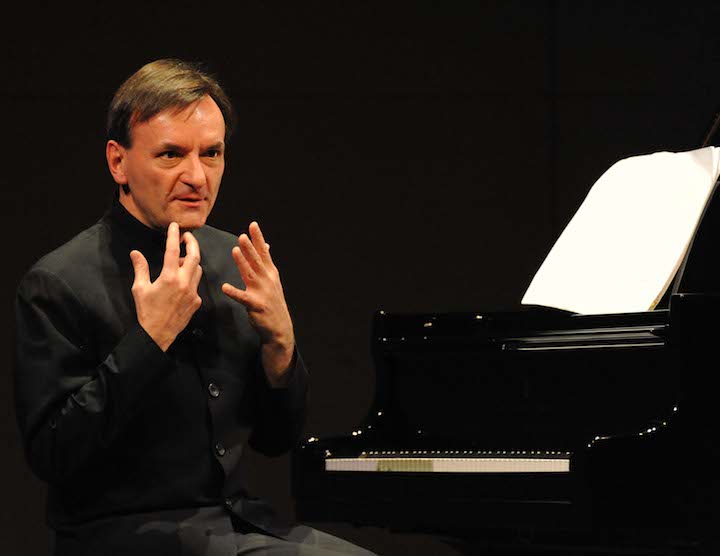British pianist Stephen Hough makes the most of his lyrical bent while showcasing his technical chops in a new Hyperion recording of both piano concertos by Johannes Brahms with conductor Mark Wigglesworth and the Mozarteum Orchestra in Salzburg, Austria.
- Classical Music 101: What Does A Conductor Do? - June 17, 2019
- Classical Music 101 | What Does Period Instrument Mean? - May 6, 2019
- CLASSICAL MUSIC 101 | What Does It Mean To Be In Tune? - April 23, 2019
A select handful of concertos by Mozart and Beethoven, the first of Tchaikovsky’s and the two Brahms concertos are what we are most likely to hear during any symphony orchestra season, or at a piano competition. This is music that’s familiar and comfortable, like a pair of bedroom slippers.
So familiar that it’s easy to forget that Brahms is not easy either technically or musically. Nor are these two works typical of the showy Romantic piano concerto tradition.
 Hough has been performing the Brahms concertos around the world (including Toronto) for years and years, but he waited until his early 50s to set his thoughts down for a permanent record.
Hough has been performing the Brahms concertos around the world (including Toronto) for years and years, but he waited until his early 50s to set his thoughts down for a permanent record.
The result is emphatically worth our attention.
The most noticeable thing about these interpretations is their freedom. Recorded at the Festival Hall in Salzburg with the orchestra of the Mozarteum and conductor Mark Wigglesworth in January, these performances are paragons of carefully modulated musical storytelling.
The coordination between conductor and soloists is remarkable, resulting in subtle rubato, pauses and dynamic shifts made in perfect lock step. Hough is a master of the velvet touch, while Wigglesworth gets utter clarity and balance from his orchestra.
With this sort of freedom with the music, there’s always the threat that the overall interpretation will be less than the sum of some very pretty parts, but both concertos come out as impeccably rendered wholes that also delight in the little details. Hough can come off as a bit mannered at times, articulating details in some passages that are usually performed more evenly and changing some common phrasings, but his personal touches all make sense in the context of the bigger picture.
These two concertos are very different pieces of music. The first was, in many ways, Brahms’ symphonic coming-out piece as a 20-something. He wrote his second concerto 20 years later. He had a lot to prove in the first, and a lot of skill to incorporate into the second. The first is self-consciously dramatic, the second is more quietly assured — and the musicians treat the music accordingly.
Both pieces are structured like supersized chamber works, where the piano is less about showboating than being an orchestral collaborator. Of course the pianist can show off, with crashing chords and cascading runs, but there is much tender singing in the slow movements and near-constant dialogue between the big, black beast and everyone else on stage.
In these Brahms concertos, having the soloist and orchestra on the same wavelength really does make a difference.
You can check out the details here.
+++
Stephen Hough is coming to Toronto on March 2 for a solo recital at Koerner Hall. Details here.
John Terauds
- Classical Music 101: What Does A Conductor Do? - June 17, 2019
- Classical Music 101 | What Does Period Instrument Mean? - May 6, 2019
- CLASSICAL MUSIC 101 | What Does It Mean To Be In Tune? - April 23, 2019




